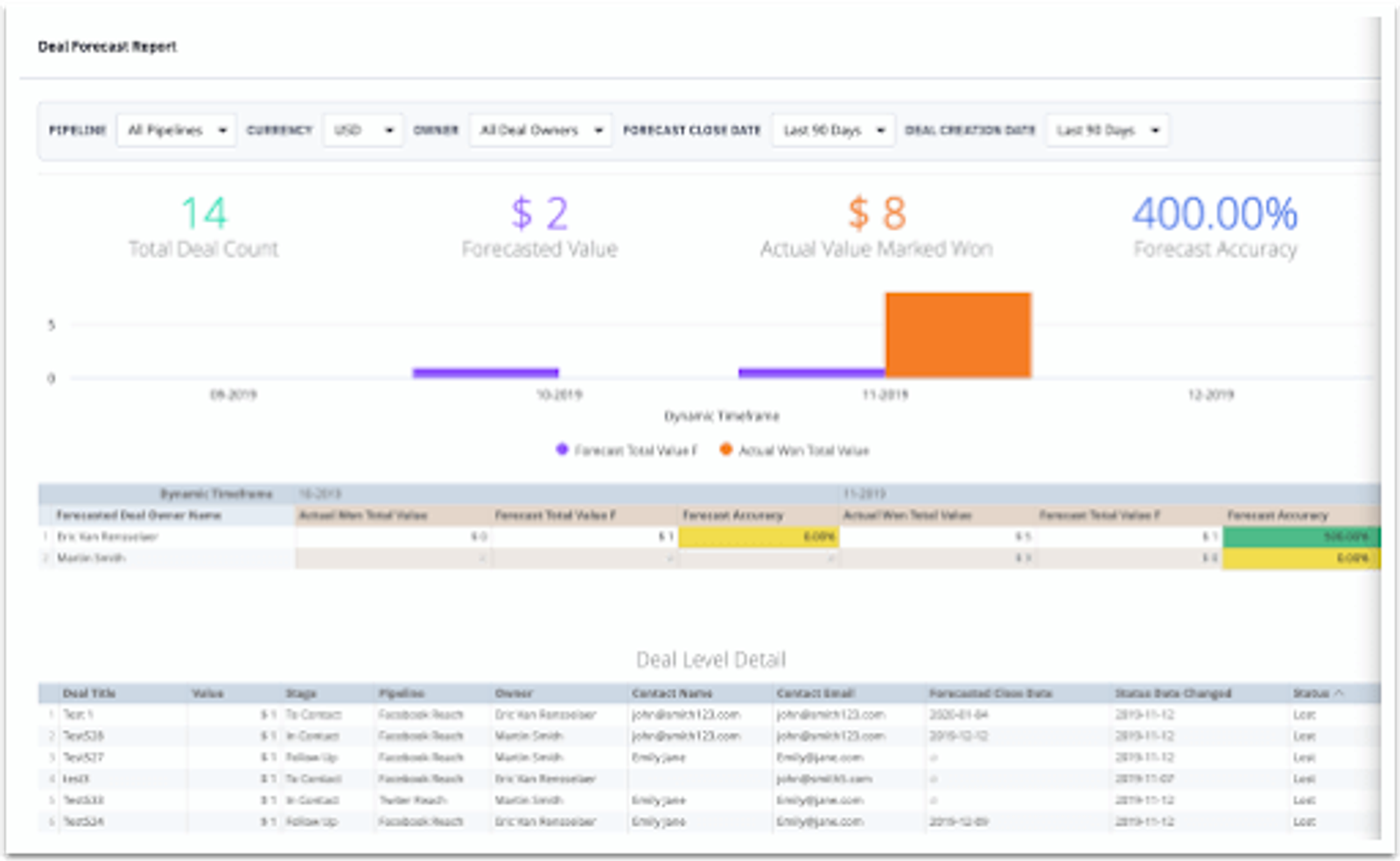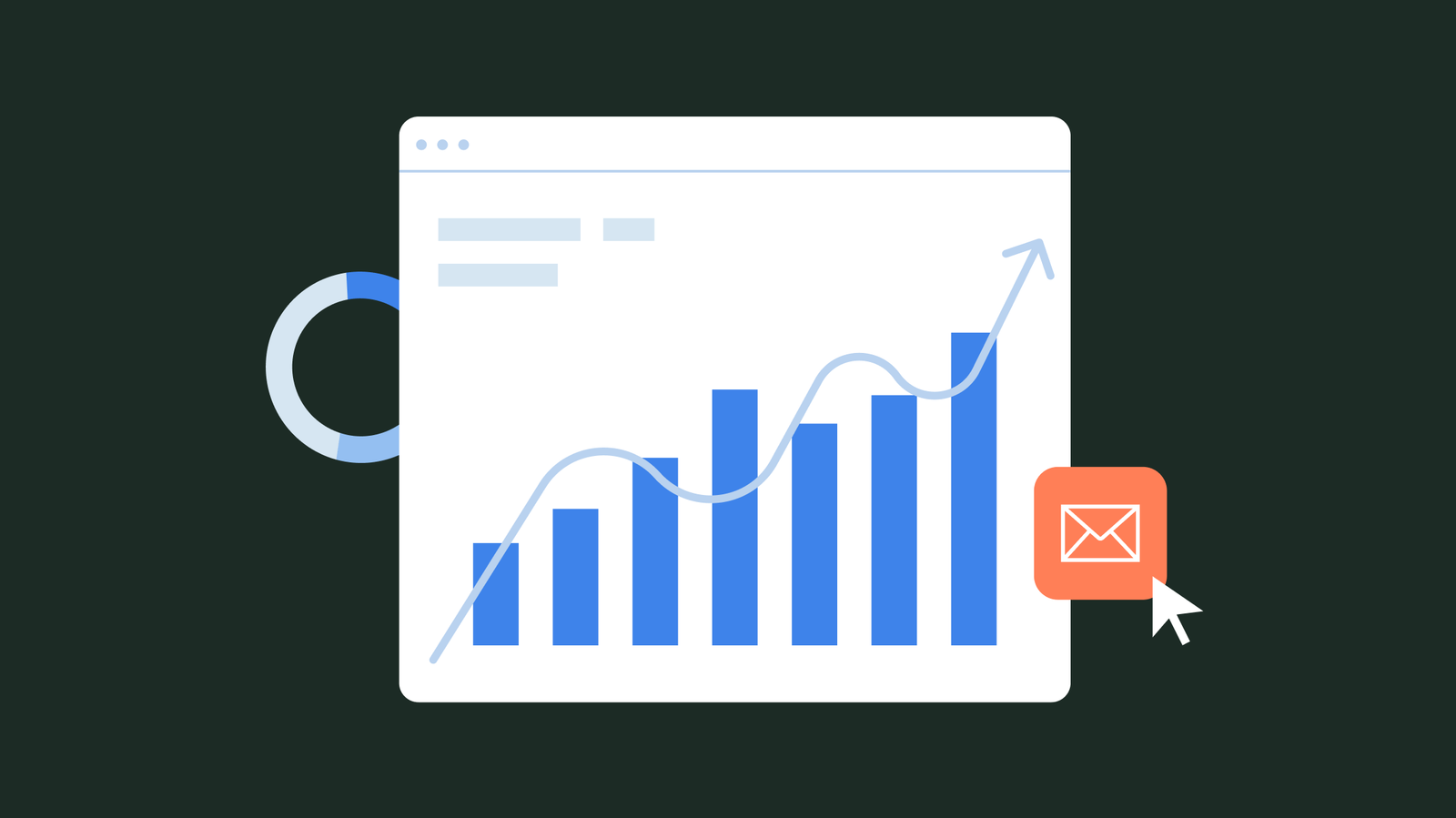Benjamin Franklin once said, “If you fail to plan, you plan to fail.” 200+ years later, it still rings equally true when trying to grow your business.
You have something to reference when you have a plan. You can see if you’re headed in the right direction and at the right speed.
But vague plans alone won’t help you estimate your growth rate. That’s what makes sales projections so important. They can help you set clear sales goals, explore different potentialities, and grow your customer base consistently.
Below, we’ll define a sales projection and why you need one. Then, we’ll show you a few different ways to make sales projections and cover some of the challenges you may run into.
What is a sales projection?
A sales projection is a document in which you estimate future sales figures over a specific period. You can create them for various theoretical scenarios to better plan your actions.

For example, you could predict that you will sell 1,000 packages in 2022, compared to the 800 from last year, since you’ve hired an additional sales team.
Sales projection vs. sales forecast: What’s the difference?
The terms sales projection and sales forecast are often used interchangeably. They aren’t too different, but they have varying levels of “optimism” and realism.
An accurate sales forecast estimates your likely sales figures based on historical data within your business and the current sales trend. It’s the more realistic of the two. Because of this, forecasts tend to have shorter timeframes.
On the other hand, a sales projection is slightly more theoretical and “what-if.” It looks at your desired sales numbers based on different potential scenarios, making them useful for decision-making.
For example, you might make a sales projection if you’re considering targeting a new type of customer. You’d want to estimate how that could impact sales figures before you invest in targeting this new market.
Eight reasons to make sales projections
Sales projections can be great tools for making decisions about future actions in your business. Here are some reasons to start making them:
1. Estimate demand and inventory needed
Accurately estimating demand is necessary to purchase the right amount of inventory.
Too little inventory, and you can’t meet that demand. You run out and end up with unhappy customers. The last thing you want is to lose out on a big sales opportunity because you don’t have the product.
But buy too much inventory, and you tie up tons of money in stock that doesn’t sell fast enough. That leaves you less cash to invest in other things. Or worse — you have to dispose of that unsold inventory and take a loss.

This is where sales projections help most. Getting some ideas of your sales figures in the future shows you how much inventory you should buy — usually, projections skew slightly on the side of “too much” so you don’t run out. This is especially true if you sell consumer products, as you should always maintain a sizable stock surplus.
2. Make funding your business easier
Business lenders risk not getting their money back by lending to a business that eventually defaults on its debt or goes under. This is different than working with a debt factoring provider. Amplifying this strategic approach further, the utilization of a business loan calculator solidifies your preparedness. By providing a detailed sales projection and a calculated loan payback scheme, you effectively reiterate to potential lenders that thoughtful planning has ensured the firm's growth and capacity to successfully manage financial obligations.
Investors also want to make sure they earn a return on their investment — making accurate sales projections even more critical.
The more evidence you have of strong potential business growth, the more investors you could persuade—every potential sale matters.
3. Plan out marketing and sales efforts
Projecting your sales revenue numbers helps you plan your sales and marketing goals and campaigns.
This is especially true for businesses with predictable sales fluctuations throughout the year. You can note times where sales might be weak and offer limited-time discounts or invest more in your marketing.
On the other hand, you can potentially raise your prices during times of stronger sales, take your foot off the marketing and sales gas pedal, and reinvest that surplus into other areas. If your sales are lagging in a quarter, try to educate your team on effective sales skills to close more deals.
4. Make smart decisions about product development
Sales projections are great tools for making decisions about your products and services. Imagine that you’re considering a new product or service line. Projecting its sales revenues gives you a more concrete picture of whether the new offer will help you grow.
On the other side of the coin, projections can help you look at your worst-performing offers and see if you’re better off ending them.
Put these together, and you could cut out the offers that don’t sell and reinvest the resources you free up into the offers that do sell.
5. Improve budgeting accuracy
Each product you make costs something. Usually, the cost-per-unit is fairly predictable — at least, for expenses associated with your product. So by projecting your sales, you can increase your budgeting accuracy when it comes to these costs.
6. Improve financial planning
Once you project your sales, you can estimate your revenue by multiplying your sales figures by your price per product.
Then, calculate your total cost of goods sold — the cost of producing those goods.
Subtract the cost of goods sold and other expenses from your revenues to get a rough profit projection. With this info, you can plan out potential business investments and your personal finances. You can even estimate your taxes.
7. Make hiring decisions
Sales are a key indicator of growth potential. With fast growth often comes the need to hire people — such as a sales team to keep up with those growing sales.

By projecting your sales and estimating your total revenue, you can begin planning to recruit team members ahead of time. This gives you more space to define what types of roles you need to hire for and what you’re looking for in candidates.
8. Benchmark and assess sales performance
Projections serve as a measuring tool for your sales performance, especially if you make pessimistic, realistic, and optimistic projections.
Each one serves as a different benchmark. Your pessimistic projection is your worst-case scenario, your realistic projection is what you expect to achieve, and your optimistic projection is your “stretch” goal. You can measure performance against each one and reevaluate your goals during and at the end of each projection period.
Assumptions that can impact sales projections
Sales projections estimate future revenues, so there’s plenty of uncertainty. Several variables can impact what kind of sales performance you project, including the following:
Your products or services
Launching new products and services and changing or removing existing offers will affect your total sales. Your new products or improvements could bring in more customers, whereas cutting out product lines could decrease sales.
Production costs are another part of your products and services. Increasing production costs means you may have to raise prices or cut necessary costs elsewhere, ultimately reducing your potential sales.
Your marketing
Marketing plays a direct role in your sales. This includes how effective your marketing efforts are and how much you invest in them.
For example, if you’re scaling up a wildly successful marketing campaign or retargeting ads to a market that fits better, you could project much higher sales figures.
Time of year/seasonality
Various factors dealing with the seasons and time of year can impact your sales projections. It could be because of weather, holidays, or other reasons.

Take an electronics retailer, for example. They’ll project far more sales during the fall and winter. Customers are out doing their holiday shopping, and many video games release during the holiday season.
They might then project fewer sales in the early months of the following year as the holiday season ends.
Economic conditions
The economy at large is an important factor to consider when creating accurate sales projections.
For instance, you may have to raise your prices in times of higher inflation. This could decrease your project sales figures as fewer customers are willing or able to pay those higher prices.
On the other hand, in a booming economy, your projections might increase.
Legal or regulatory changes
Changes in laws and industry regulations could impact your projections, especially if they’re targeted toward your industry.
Of course, it’s hard to predict when new regulations will come and how exactly they’ll impact your operation. This is why it’s essential to monitor for these changes regularly.
How to create a sales projection: Top-down vs. bottom-up
Broadly speaking, creating a sales projection involves a few steps:
- Reviewing and analyzing past sales and financial data
- Assessing market trends, price changes, and other assumptions
- Using this information to estimate total sales revenue
Once you’ve done that, you can go a step further by subtracting overall projected expenses to estimate your gross profit margin.
That said, there are two ways to make projections, top-down and bottom-up. Below, we’ll briefly explain each one, then discuss which type you should use.
Top-down projection
A top-down projection looks at the total size of the market you’re in. This is called the Total Addressable Market, or TAM. The projection then predicts how much market share a sales organization could capture.
For example, a market might be $100 million. A small business estimates it could get about 5% of that, so it would project a total of $5 million in revenue per year.
This projection is relatively simple, but it’s much more theoretical. You’re working with a few big, abstract numbers without drilling down into what’s behind your sales.
Bottom-up projection
A bottom-up projection starts with the number of units you expect to sell. It then multiplies that by your price per unit to get your total projection.
These projections can factor in many other details, such as the number of sales reps or locations. As a result, bottom-up numbers tend to be more grounded and better suited for established businesses with existing products and customers.
Which one should you use?
As you can see, the bottom-up projection is usually more accurate, but it relies on having real data, like the number of stores, sales reps, and historical data to go on. So if you’re starting a business or launching a new product, you might want to use a top-down projection.
Otherwise, the bottom-up projection is the way to go — except it can be a lot of work.
The shortcut to an accurate bottom-up projection — use a CRM report
If you’re currently using a customer relationship management platform to manage your sales pipeline, it probably offers some sort of report or dashboard you can use to project sales.
For example, in the ActiveCampaign CRM, you have the Deal Forecast report that forecasts the number of deals and the likely revenue that they’ll generate based on historical data.

Beyond the dashboard, it also offers state-of-the-art sales automation features to help drive more sales and keep your customers happy.
Get Started With Deal Forecast Reporting
Common challenges with making accurate sales projections
Sales projections aren’t perfect — 100% accurate forecasts are impossible to make. Keeping the following limitations in mind will temper your expectations — preventing you from becoming disappointed and disillusioned if your business performance strays far from your expectations.
Subjectivity
You’ll always deal with human subjectivity when attempting to predict the future, even if you have historical data to work with.
That said, predictive analytics tools can go a long way in cutting out human bias from the equation. They can analyze data and scenarios without subjectivity getting in the way.
For example, if you sell B2B products or services, you probably have a long sales process with a large number of leads in the pipeline. A different business model with lower-cost items, like B2C, may have much shorter sales cycles.
Unreliability of past data
Projections do use past data to help estimate future revenues, but that data may not always be reliable — especially if you’re a new business.
At that point, you don’t have much data to work off of at all. It’s hard to picture various theoretical future scenarios when you barely know what an average year looks like.
Similarly, your business might be crawling at a snail’s pace for its early existence, causing you to make relatively unimpressive projections — even if you predict your business to grow.
However, you might strike gold one year and hit massive business growth, rendering even your optimistic projection unhelpful.
Time investment
The most tangible drawback to making sales projections is that they simply take resources away from the activities that move the needle — like actual lead nurturing and selling. Small businesses and solopreneurs will feel this pain the most since they may not have experts on hand to crank out accurate sales projections.

You don’t want to take away valuable time from a key sales rep or sales manager — or worse, crunch the numbers yourself. Instead, invest in software that helps you make these projections automatically based on data.
Plan the future of your business with sales projections
Business success doesn't happen by accident. You have to plan, set goals, and measure your progress to know if you’re getting anywhere.
That’s what makes sales projections so helpful. Your projections will rarely be right on the money, but they provide you direction, give you realistic numbers to strive for, and help you make decisions in all areas of your business.
If you don’t want to create projections from scratch, that’s something ActiveCampaign’s Deals CRM can help you with. You can quickly generate custom projections based on historical data.
Click here to try it free for 14 days.








